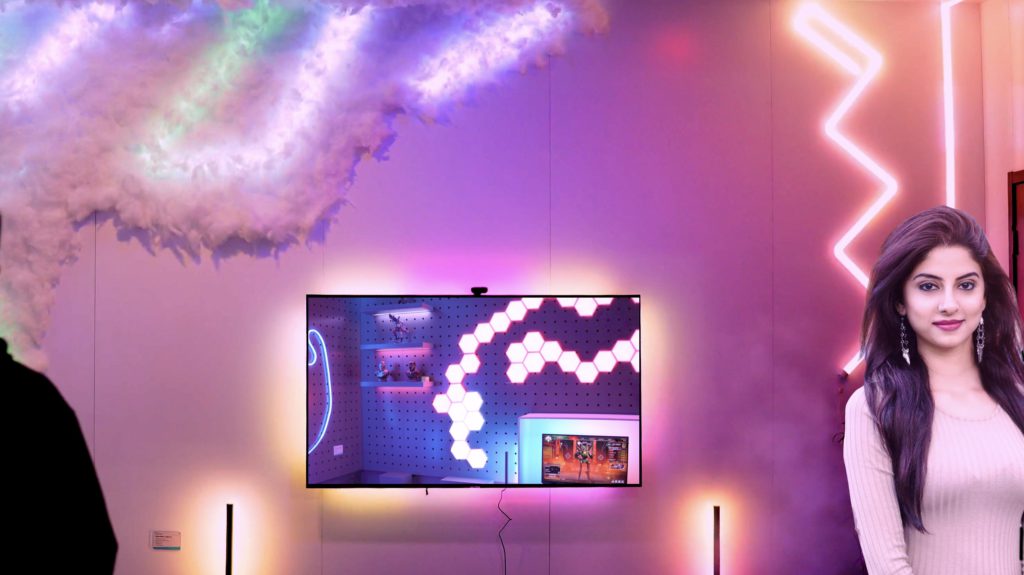Smart lights are the perfect addition to any smarthome, and some might even say that your smarthome isn’t truly smart unless it uses smart lights.
Naturally, one of the key benefits is the ability to control your lights from anywhere. Using an app on your smartphone or smartwatch, you can turn lights on or off, dim them, or change their color, all from the comfort of your couch or when you’re away from home. This feature can help to increase energy efficiency and reduce electric bills, as well as make your smarthome more secure by allowing you to turn lights on remotely or automatically, giving the impression that someone is home.
Another advantage of smart lights is their integration with virtual assistants such as Amazon’s Alexa, Google Home, and Apple’s Siri. This allows you to control your lights with voice commands, freeing up your hands and making life even more convenient. In addition, smart lights can be integrated with other smart devices in your home, such as your thermostat or home security system, to create a truly connected and automated home.
Look for lights installed professionally to work seamlessly with your security system, giving you even greater control and protection. Combined with cameras set to detect a trespasser, an animal, a vehicle or simply someone walking by, your lights can respond to get your attention, and perhaps scare off an intruder trying to stay unnoticed. Android and iOS apps from Alarm.com can control your entire smarthome, lights and all, instead of many separate apps that can’t talk to each other.

One of the recent developments in the world of smart lights is the growing number of devices that adhere to the Matter standard. As we mentioned in a previous article and our CES YouTube video, while still a work in progress, Matter promises to break down the barriers between smarthome devices from different vendors, allowing them to work seamlessly together. This means that a smart light from one company can be controlled by a smart speaker from another, without the need for additional hardware or software. This standardization may prove to be a game changer for the smarthome industry, making it easier and more affordable for consumers to adopt new technology and create a fully connected home.
What to consider when adding smart lights to your smarthome
If you’re looking to add smart lights to your home, there are a few things to consider. First, think about the type of lighting you want, whether it’s color-changing bulbs or simple white LED lights. You’ll also want to make sure that the lights you choose are compatible with your existing home automation system or virtual assistant, and look for the Matter logo. Finally, consider the cost, as smart lights can be more expensive than traditional bulbs, but the added convenience and energy savings may be worth the investment in the long run.
Smart lights are a fantastic addition to any smarthome, offering convenience, energy savings, and increased security. With the introduction of the Matter standard, the future of the smarthome is seems brighter than ever, and we can’t wait to see what other innovations are in store.
Here are some of our recommended smart lights:
The video below mentions quite a few smart lights. Part of the Skytech mission is to demystify purchase decisions around tech, so we’ll net it out for you:
- If you want to arrange lights on your wall as part of an artistic mural and have them respond to sound, go with Nanoleaf. They also make smart light bulbs and light strips, and many support Matter.
- If you want to control existing lights in your ceiling choose Lutron.
- If you want to control existing lights in your ceiling and also control your Sonos system and parts of your smart home, choose Brilliant.
Note: For Brilliant and Lutron, you’ll need to be confortable turning off electric breakers to replace your existing light switch or hire an electrician.
The following video shows you 10 ways to transform your home into a smart home using smart lights.

Also, if you aren’t handy with electricity, you’ll need a professional installer. I recommend Alarm.com, https://www.alarm.com/start
Great video! so professionally done! And thanks for talking at a slow pace for us newbies to understand!